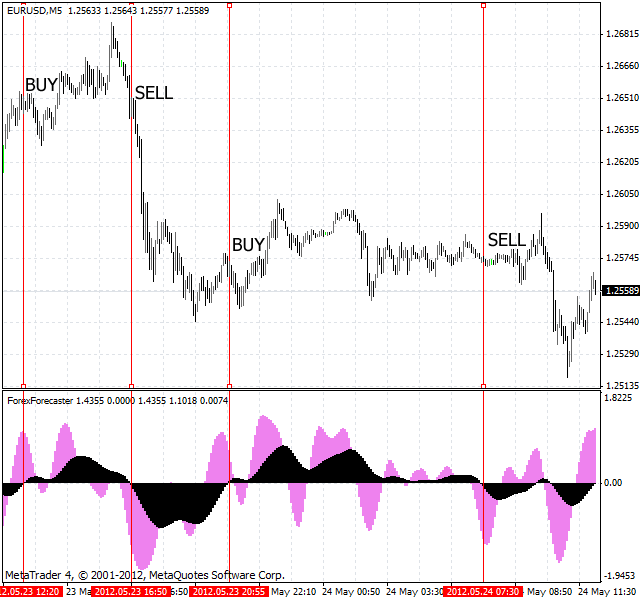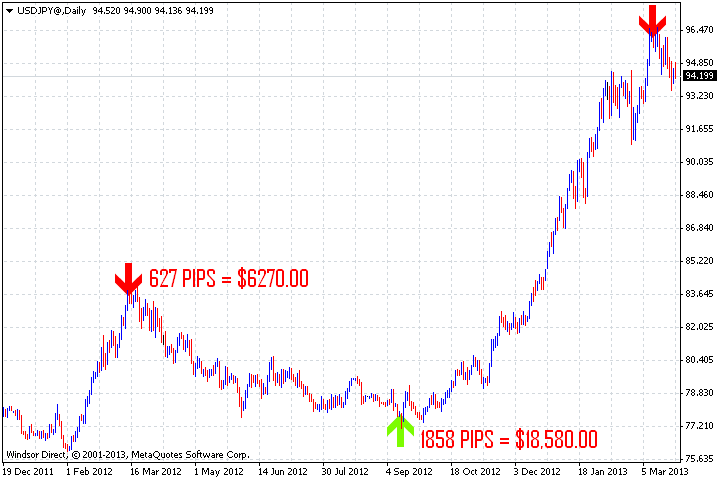Predicting Stocks Technical Indicators
Post on: 2 Июль, 2015 No Comment

In our December 1, 2011 article on Moving Averages we referenced other technical indicators which may provide information regarding the change in direction or movement of a stock. These indicators, particularly when used in conjuction with one another, may tell us when a stock is about to go up or down in price and the point in time when we might want to buy or sell. Remember, market timing is almost impossible, but these technical tools help many professional investors with the purchase and sale of stocks within their portfolios.
Relative Strength Index
RSI (Relative Strength Index) is a momentum indicator that measures the change and speed of a stock’s movement. It measures a stock’s current price compared to its past performance over a 14 period time-frame which is normally in days. This indicator oscillates between 0 and 100 with readings of 70 and above as being overbought and readings of 30 and under as being oversold.
Try bringing up your favorite stock on MSN.com (Money) or Yahoo.com (Finance) and click the one year chart. Then under indicators, click RSI. You can determine how well this indicator correlates to a change in direction of the stock price action. Generally, after a stock has closed above the 70 mark (the overbought indicator) you will tend to see the stock price start to head lower. If you are thinking about selling this stock, for what ever reason, this indicator may help you determine when to pull the trigger and do so. Likewise, after you have reviewed the fundamentals of a company and determined that they are what you are looking for in a stock, a RSI reading of 30 or less (the oversold indicator) may indicate that the price is ready to rise. In both cases you want to wait until the indicator starts to move back below the 70 mark to sell and move above the 30 mark to buy. This will help ensure that the previous up cycle or down cycle have changed direction. Determining the right time to buy and sell is difficult. Using the The Relative Strength Index (RSI) may help you define your timing.
Stochastice Oscillator
The Stochastice Oscillator is another momemtum indicator which measures the stock’s closing price relative to the high-low range over a number of periods in time. According to Dr. George C.Lane, the developer of the Stochastic Oscillator, the model does not follow the price or volume as much as it follows the momentum. Generally, the momentum will change before the price and can be an indicator of a change in direction or a revesal in the price of a stock.
The Stochastic Oscillator consists of two lines %K and %D. %K is equal to the current close minus the lowest low divided by the highest high minus the lowest low times 100. %D is equal to the 3-day simple moving average of %K. For %K the default setting or looking-back period is normally set at 14 days. The important thing to know is when the %K line passes through the %D line it signals a change in direction. The Stochastic Oscillator will always range from 0 to 100. Standard thresholds of 80 can signal an overbought situation while thresholds of 20 generally indicate an oversold condition.

When the %K line passes through the %D line in an upward direction the momentum has changed from being oversold (too many sellers) toward overbought. This is the time to buy when at or below the 20 threshold. In a similar fashion when the the %K line passes through the %D line in a downward direction while above the 80 threshold a momentum change is taking place from being overbought (too many buyer) and now may be a time to sell.
After bringing up the chart for your stock, and you click on indicators, you may notice there is both a Fast and Slow Stochastic. The Slow Stochastic was developed to smooth out some of the gyrations of the Fast Stocastic and provide emphasis of the movements. For this reason some professionals prefer to concentrate on the Slow Stochastic.
Many times the oscillators may be crossing in the mid-range between 20 and 80 which does not mean their is any clear momentum change either to the upside or the downside. It is time to be patient and remember the fundamental reasons for which you originally bought the company stock. However, if you suspect their may be some issues with the company, it’s management, products, competition, ect. it may behoove you to watch the Stochastic Oscillator as a harbinger of change in price.
Remember, as small individual investors we can not compete with the huge institutional investors, hedge funds and mutual fund managers who through sheer volume can move the price of stocks and entire markets. However, by using and watching some of these technical indicators, we can become more aware of their actions and use these momentum swings to our advantage. We recommend fundamental analysis of a company before investing. Once you are satisfied with the decision to buy, we recommend you use some technical analysis to assist with your timing of the purchase and the eventual sale of the stock. The objective is to buy low and sell high and remember Warren Buffet’s Rule #1- Don’t loose money.














